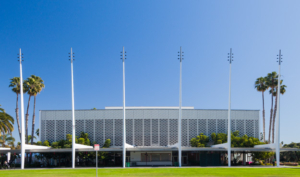Important City Council Budget Session Tuesday, May 23
*Attend Meeting and/or Write to Council*
Your Conservancy Board is very concerned about the negative impact the city budget cuts of the last three years have had on our Historic Preservation Program. These cuts have reduced the number of Landmarks Commission meetings, limited Commission responsibilities, and raised the cost of designation applications so only the wealthiest property owners can afford to apply for landmark protections.
Landmarks applications are in sharp decline and Santa Monica may already be losing significant historic resources that we can never get back.
What’s Going Wrong?
- Landmarks applications cost $6000-$7000 to file, the most in California!
- Timelines for landmark nominations see untenable delays of nine months or more.
- Owners have little incentive to consider landmarking without reinstatement of planning division fee waivers and reasonable timelines.
- Relying on the public to review demolition permits is not sustainable; Landmarks Commission review of demolition permits for buildings 40-years or older must be reinstated!
- Without a timely and affordable process, we cannot seek out and recognize historic resources significant to historically marginalized groups that will contribute to the city’s stated commitment to social justice.
Acknowledging the city’s current funding constraints, we are asking Council to recommend Restoration of the Preservation Program in 2 Phases.
Phase 1 (NOW): Budget neutral optimization to reduce the cost burden on applicants right away!
- Restore monthly meetings of the Landmarks Commission to ensure city-wide review of historic resources.
- Reduce the cost of Landmark Applications by streamlining consultant and staff reports.
- Streamline Certificate of Appropriateness analysis to focus on conformance with the standards.
- Return Demolition Review to the Landmarks Commission.
Phase II (NEXT YEAR): Restore the 2019 Preservation Planner position (a credentialed professional in preservation and planning with skills in historical analysis) so that:
- Landmark Application Analysis can be conducted in house just as all other discretionary building permits are evaluated, eliminating the need to hire costly outside consultants, and streamlining the process.
- Applicants can be informed of Incentives such as encouraging the use of the State Historic Building Code and Zoning Ordinance exceptions to achieve programmatic goals while preserving historic features.
- With reduced costs, fee waivers for nonprofit organizations can be restored to ensure equitable access to the program.
WHAT YOU CAN DO TO SUPPORT THIS PROPOSAL
Attend the Council Meeting this Tuesday, May 23 to speak about the urgency of restoring the Preservation Program – AND/OR – Use the talking points above to write to Council by noon on Tuesday to put your support in the public record.
Send your email to councilmtgitems@santamonica.gov with “May 23, 2023 Agenda Item 7A Five-Year Financial Forecast Update, FY 2023-25 Proposed Biennial Budget” in the subject line.
To read the Conservancy’s letter to City Council, please click here.
Landmarks are irreplaceable, we can’t afford to wait to restore the city’s Historic Preservation Program!

